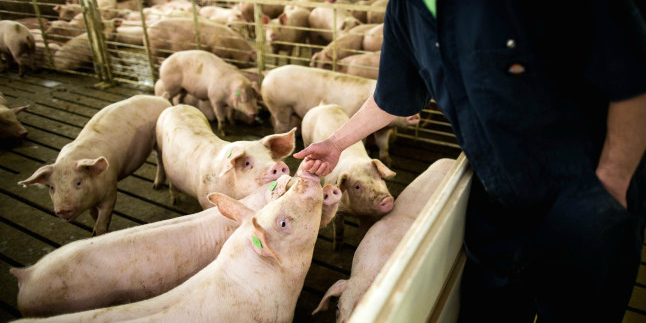by Dean Baker
I understand people can have reasonable differences of opinion on trade deals like the Trans-Pacific Partnership (TPP), but why is it that the proponents have to insist, with zero evidence, that not doing the deal was an economic disaster? Yes, I know the political argument, which seemed to arise late in the game, that US standing in the world has collapsed because we didn’t follow through on the TPP. But let’s just stick with the economics.
Politico (8/7/17) ran a lengthy piece saying that the US pullout from the TPP undermined the hopes for a revival of rural America. It cited as evidence a report from the United States International Trade Commission that projected the deal would have increased agricultural output by 0.5 percent when fully phased in, 15 years from now. Seriously, folks, a 0.5 percent increase in output is going to save rural America? That’s three months of normal growth; who are you trying to fool?
The New York Times (8/8/17) joined the act with a news article that started out by pointing to the costs from the Trump administration’s ambiguities on trade policy. While the piece made many reasonable points, it then turned to the losses from pulling out from the TPP, telling readers:
One accomplishment that Mr. Trump has notched on trade has been an agreement with China that opened its market to American beef exports. For the beef industry, however, the benefits of that deal pale in comparison with the cost of abandoning the Trans-Pacific Partnership, which had been spearheaded by President Barack Obama. It would have provided access to the enormous Japanese market.
Instead, Japanese tariffs on American frozen beef, which would have declined under Mr. Obama’s deal, are on the rise. Last week, they increased to 50 percent from 38 percent, making America’s meat even more vulnerable to competition from countries such as Australia.
“TPP was fantastic,” said Kent Bacus, director of international trade for the National Cattlemen’s Beef Association. “When you walk away from it without a meaningful alternative, that causes a lot of alarm in the beef industry.”
While the piece tells us how important the Japanese beef market is, it would have been useful to get some sense of proportion. According to the piece, Japan’s entire market is $1.5 billion annually. US beef production is currently $60 billion. This means that if US producers were able to secure half of Japan’s market—a very impressive accomplishment for a country halfway across the world—it would raise the demand for US beef by 1.3 percent.
The piece also misleads readers on the nature of global markets. If Australia gets preferred access to Japan’s beef market, then some of the beef that Australia used to export to other countries will be diverted to Japan. This will open up new export markets for US beef. It is worth noting that, while the piece includes the exuberant praise of the TPP from Mr. Bacus, it does not quote or cite any critics of the deal.
The piece then turns to the tariffs imposed on Canadian softwood lumber, ostensibly because Canada subsidizes its lumber exports. It tells readers:
And imposing tariffs to protect one domestic industry often does damage to another. The most prominent recent example comes from an industry that is dear to Mr. Trump’s heart: home construction….
These days, home builders may not be as apt to cheer. In April, the Trump administration announced that it would impose new tariffs on Canadian softwood lumber, saying the exports are unfairly subsidized. The proposed tariffs, which could be as high as 24 percent, have already led to a spike in lumber prices. According to Bloomberg data, they are up nearly 18 percent this year.
That has put the squeeze on American home builders, who rely heavily on Canadian lumber. The United States imported $5.7 billion in softwood lumber last year, mainly for residential building.
It’s not clear where Bloomberg gets its data, but the Bureau of Labor Statistics reports that softwood lumber prices have increased by 9.7 percent over the last year, just over half of the 18 percent figure cited in the piece. We are currently building more than 600,000 new homes a year, with an average sales price of almost $380,000. This puts the total value of new homes in the range of $220 billion.
If, as a result of the tariff, we paid 24 percent more on $5.7 billion in softwood imported from Canada, this would increase the cost by roughly $1.4 billion. That would imply an increase in costs of a bit more than 0.6 percent of the sales price. That is not altogether trivial, but it seems unlikely to wreck the housing industry.
A version of this post originally appeared on CEPR’s blog Beat the Press(8/8/17). You can send a message to the New York Times at letters@nytimes.com (Twitter:@NYTimes). Please remember that respectful communication is the most effective.

